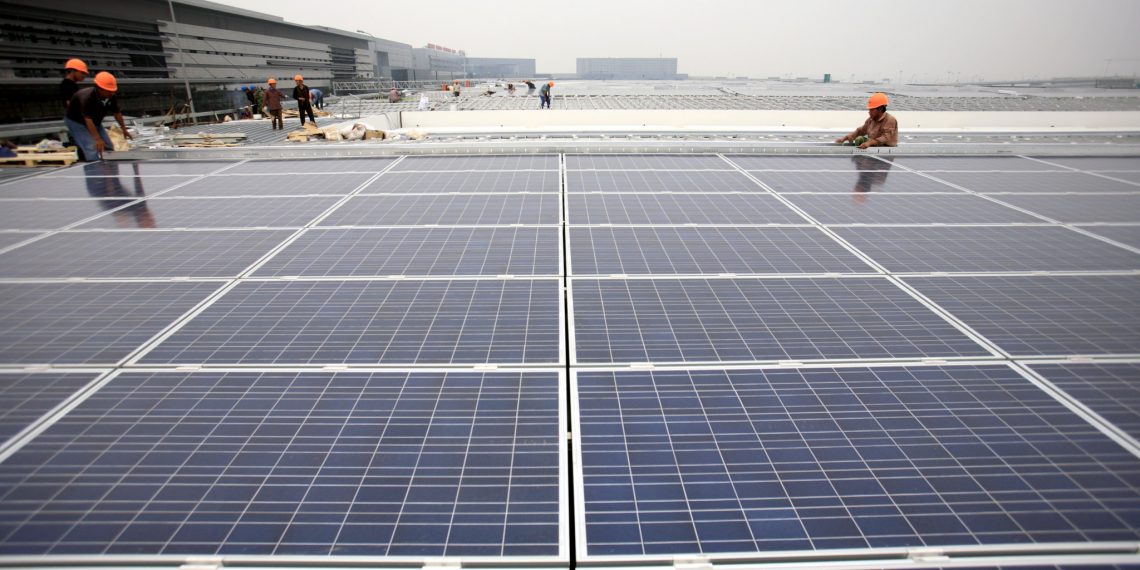Every year for the past decade, scientists have come together to measure the gap between where greenhouse gas emissions are headed under current climate pledges, and where they need to be in order to limit global warming to the levels specified in the Paris Agreement. Last week, these scientists announced that once again, even as efforts to address climate change have evolved, the gap has grown.
Under current national climate pledges, or nationally determined contributions (NDCs), the planet is on track to warm by 3.2 degrees Celsius, with disastrous consequences for livelihoods and ecosystems alike. The 2020 NDC enhancement process is a moment for countries to assess the level of ambition in their current NDCs, and decide which targets can be set or revised to reflect the new options available to them. To date, 68 countries — primarily small emitters — have indicated that they will do so.
In a new set of guidance, WRI and its partners review opportunities for countries to step up their NDCs through action in four of the highest-emitting sectors: power, transport, forests and agriculture. These sectors collectively represent 63% of global emissions. In addition to pointing countries in the right direction to transform specific sectors, these opportunities can also facilitate more ambitious economy-wide GHG targets.
Power: Falling costs of renewables and new developments to decarbonize the power sector
The power sector is the largest source of energy-related CO~2~ emissions. Decarbonizing the power sector—which can be done while advancing access to the affordable and reliable power essential to raise standards of living—offers numerous co-benefits, including employment generation, improved energy access, economic and social development, reduced water stress and improved resilience.
Declining technology costs, grid modernization and new business models have unlocked opportunities to transform power systems in ways that seemed improbable even just five years ago. To deliver the power sector transition, countries will need to use their NDCs to advance foundational strategies, including enhanced grid flexibility, plans to address existing fossil fuel assets and integration of end-use sectors such as buildings and transport with the power sector.
NDC enhancement can reflect those elements by:
-
Renewable energy capacity and generation targets, including distributed renewables targets that can enable energy access
-
Grid improvement targets and policies in parallel with the deployment of renewable energy, including targets for energy storage that can bolster the penetration of renewables
-
Policies and targets to tap into synergies between the power sector and end-use sectors, such as electrification or efficiency targets for energy use in buildings and industry
-
Commitments to end inefficient fossil fuel subsidies, accompanied by a just transition toward a coal phase-out
Transport: Ramping up vehicle electrification, promoting public transit and advancing clean freight
With demand skyrocketing, transport emissions are projected to be three to six times higher than Paris Agreement-compatible levels by mid-century. Transforming transport via enhanced NDCs is critical. Key opportunities include:
-
Transport electrification and zero-emission vehicle targets that leverage the opportunities offered by declining battery costs and a cleaner grid to advance transport electrification
-
Targets to build infrastructure for, and shift mode-share to public transit, walking, and cycling
-
Targets and policies to address the freight sector (which accounts for 40% of transport emissions), including by advancing electrification and clean fuels, as well as logistics and operational efficiency
Forests: Storing carbon while protecting livelihoods
Forests and land-use account for about 10% of net greenhouse gas emissions — but with proper management, the sector can transform from a carbon source to a carbon sink. It also offers cost-effective carbon removal options that can be deployed at scale. Enhancing forest ecosystem services provides adaptation and development co-benefits, essential for vulnerable populations whose dependence on forest ecosystems is highest.
Key opportunities for enhancement in NDCs include:
-
Targets for conservation or reducing deforestation. This could be accompanied by measures promoting protected areas, forest ecosystem service payments, and land tenure reform.
-
Targets focused on particular types of forests, such as primary forests, or mangroves and peatland forests.
-
Reforestation and restoration targets. This could be accompanied by public investment in reforestation/afforestation, and sustainability certification program of forest products.
Agriculture: Advancing food security
Climate change is already impacting food production in many regions through lost crops and dwindling employment opportunities. These impacts are likely to become increasingly severe by 2030, placing global food security and the livelihoods of hundreds of millions at risk. Agriculture is also the second-largest source of GHG emissions.
Despite the challenges, there are tremendous opportunities to foster productive, resilient and inclusive farming practices, which also bring about both adaptation and mitigation benefits. For example, boosting yields of crops and livestock through sustainable intensification can reduce emissions per unit of food produced and greatly relieve pressure on the world’s remaining forests. And consumption can be more efficient by reducing food loss and waste and by shifting to healthier and more sustainable diets in wealthier countries.
Although more than 90% of NDCs mention agriculture, the coming round of NDC updates enables countries to more fully embrace all relevant opportunities, including:
-
Targets and policies for better crop management, such as targets to reduce methane emissions through improved crop management practices for rice
-
Targets and policies for better land management, such as reducing or eliminating the use of fire on agricultural lands
-
Targets and policies for more sustainable production and consumption measures, such as specific food loss and waste reduction targets
-
Policies to make the agriculture sector more equitable and resilient, such as improved agriculture extension, allocating resources to women small-scale farmers, and enhancing social safety nets to provide protection to farmers
The Next Year Is Pivotal
In 2020, nations have the first opportunity to update their Paris targets. Stepping up this ambition is vital to ensure that the objective of the Paris Agreement is achieved.
With falling costs of technology, and an increased understanding of sustainable policy measures, the capacity to act has increased significantly from when countries submitted their initial NDCs. Taking transformational action in the four above sectors will enable countries to strengthen their climate commitments, while furthering sustainable and equitable development. To close the emissions gap, it is vital that the world’s largest economies and top emitters, in particular, take action.



